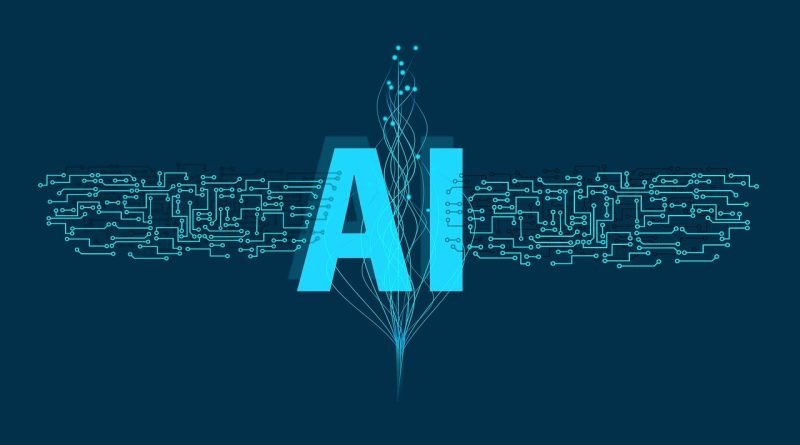An Overview of the Hierarchical Levels of Artificial Intelligence and Machine Learning
Artificial intelligence is a process that mimics human intelligence in general and cognitive intelligence in particular to diminish the barriers of work execution between man and machine. This means that artificial intelligence is a process that trains machines to perform in a similar way like human beings. There is hardly a process in the present time that does not use artificial intelligence in one or the other way. For instance, the modern search recommendation engines make use of algorithms and machine learning techniques that fall within the larger ambit of artificial intelligence. The use cases of artificial intelligence can be understood from the recommendation systems of Netflix, Amazon and Spotify that use this technology in various forms and at different levels.
In the present times, the scope of artificial intelligence is gradually increasing. The present business market is in constant need of AI engineers and ML professionals. Given the way our higher educational system is organized, it is but natural that we are riddled with a demand supply mismatch. In order to resolve this mismatch, it is necessary to introduce Artificial Intelligence and machine learning courses that act as a bridge between the academic system and the industrial ecosystem.
The levels of artificial intelligence
A hierarchical classification and grading system is followed while arriving at the levels of artificial intelligence. In this type of classification system, the first level is usually the simplest level. The second level improves upon the first level by introducing some novel techniques and methodologies. The third level is the intermediate level and the fourth level is the advanced level. In this way, the levels of artificial intelligence are arranged from the simplest to the most complex level. The simplest level belongs to the machines that are classified as a reactive machine. At the second level, machines are given the name of limited memory. The theory of mind forms the third level of artificial intelligence. The top level is the most advanced level where machines achieve the state of self awareness.
Let us look at these levels in some more detail.
Reactive machines
Reactive machines are those types of machines that are trained to execute specific tasks. After feeding these machines with input, they give a defined output which is both reliable as well as valid. The most common example of a reactive machine is the search engine recommendation technique.
Limited memory
The second level of artificial intelligence called the limited memory stores the data that is fed as input so that it can later be utilized to improve upon the existing tasks. In this way, machines that use this technique are able to improve their efficiency over a period of time. This level also forms the ground for the genesis of techniques like machine learning as well as deep learning. The most prominent example of limited memory machines include the voice assistants that are used in our homes and businesses.
Theory of mind
The theory of mind is a level of artificial intelligence that experiments with the cognitive capabilities of machines. The primary goal of theory of mind is to imbibe some sort of cognitive emotions in machines so that human machine interaction becomes as smooth as possible. When machines understand humans at the cognitive and emotive level, they are said to possess some capabilities of the human mind.
State of self awareness
The most advanced level of artificial intelligence is called the state of self awareness. All the present capabilities of artificial intelligence are far away from achieving this level. To achieve this level seems to be the ultimate goal of AI developers. In the state of self awareness, machines are actually aware of their being. This means that machines become aware of their physical existence which shapes their behaviour in a certain way.
The levels of machine learning
Machine learning can be considered as a subset of artificial intelligence and the hierarchical gradation of machine learning follows a similar pattern like that of its parent branch.
- The first level of machine learning is called supervised learning. In supervised machine learning, machines are usually fed with labeled data sets so that training takes place in a very specific way and the model can be trained to achieve a particular task. An analogy of this type of machine learning can be understood from the student teacher relationship. In this type of relationship, the teacher specifically guides the student, that is, the machine to achieve a particular task.
- The second level of machine learning is called unsupervised learning. In this type of machine learning, machines are fed with unlabeled data and training is carried out without any external guidance. The most common examples include the clustering techniques in which a machine is expected to segregate data sets on the basis of certain parameters.
- The third level of machine learning is called semi-supervised machine learning. As the name indicates, this type of machine learning uses both labeled and unlabeled data sets and is a hybrid between supervised and unsupervised machine learning. In this type of machine learning, a machine is allowed to learn on its own. However, if the need be, external guidance and commands are provided to direct to the processes in a specific way.
- The fourth level of machine learning is called reinforcement learning. In this type of machine learning, a machine is allowed to learn from its environment and no external input is provided. This can be understood in the form of an analogy. Let us consider that a person is stranded on an island and he is supposed to make his living out of the limited resources available on the island. Over a period of time, he gets accustomed to the environment and learns to tackle contingency situations. In this way, reinforcement machine learning is an advanced type of machine learning in which the environment plays the role of an ultimate guide to direct the functioning of the machine in a specific manner. Over a period of time, a machine that has been trained with the help of reinforcement learning increases its efficiency and performance in achieving predefined tasks.
The state of deep learning
The ultimate level of machine learning is the state of deep learning. Deep learning makes use of artificial neural networks that are formed by an aggregate of nodes. Each node performs a specific function by operating on the input from the previous node. In this way, the most complex functions and algorithms form the architecture of deep learning. This architecture has been designed in such a manner that it caters to the most advanced and complex problems. Some of the most prominent techniques used in deep learning include feature extraction, autoencoder, back propagation and adversarial neural networks. One of the real life example of deep learning is provided by driverless cars. In driverless cars, deep learning works as a prime technique that allows such a car to distinguish a pedestrian from a lamp post and recognise the significance of traffic lights as well as road symbols. This technique also allows the driverless cars to lower down the speed in case of sighting a speed breaker.
Concluding remarks
The hierarchical levels of artificial Intelligence and machine learning not only signify the sub domains within these branches but also give an indication of the level of development we have achieved in these fields.




